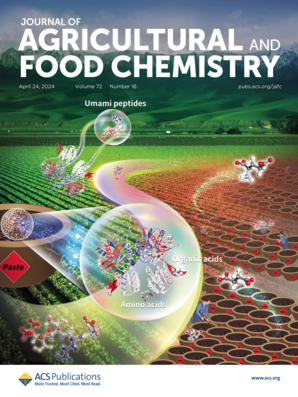Application of Silica Nanoparticles Induces Different Effects on Inorganic and Methylated Arsenic Accumulation in Rice Grains: Insights from Arsenic Transformation in Soil
IF 5.7
1区 农林科学
Q1 AGRICULTURE, MULTIDISCIPLINARY
引用次数: 0
Abstract
Silica nanoparticles (SiNPs) are promising agrochemicals for reducing pollutant accumulation in plants. However, their applications sometimes fail to reduce arsenic in rice grains. Here, we explored the mechanisms using pot experiments via foliar and soil applications, respectively. Both applications significantly decreased As(III) (19.2–35.1%) and DMA (74.4–81.3%) in grains but increased As(V) by 1.2–1.8-fold. SiNP applications reduced As(III) but promoted As(V) in porewater during the flooding period. The As(III)-oxidation gene aioA showed a 1–3 orders of magnitude higher abundance than arsenic-reduction/methylation genes, and its abundance significantly increased after both applications. SiNP applications facilitated the release of Fe-bound organic carbon into porewater and promoted bacterial growth and As(III) oxidation, leading to high As(V) availability for rice uptake. Nevertheless, foliar spraying performed better than soil amendment in reducing total arsenic in grains by inhibiting stem/nodes-to-grain translocation. Our findings highlight the microbial arsenic transformation in soil regulated by SiNPs and demonstrate the advantages of foliar spraying in the arsenic-contaminated paddy field.

求助全文
约1分钟内获得全文
求助全文
来源期刊
CiteScore
9.90
自引率
8.20%
发文量
1375
审稿时长
2.3 months
期刊介绍:
The Journal of Agricultural and Food Chemistry publishes high-quality, cutting edge original research representing complete studies and research advances dealing with the chemistry and biochemistry of agriculture and food. The Journal also encourages papers with chemistry and/or biochemistry as a major component combined with biological/sensory/nutritional/toxicological evaluation related to agriculture and/or food.

 求助内容:
求助内容: 应助结果提醒方式:
应助结果提醒方式:


